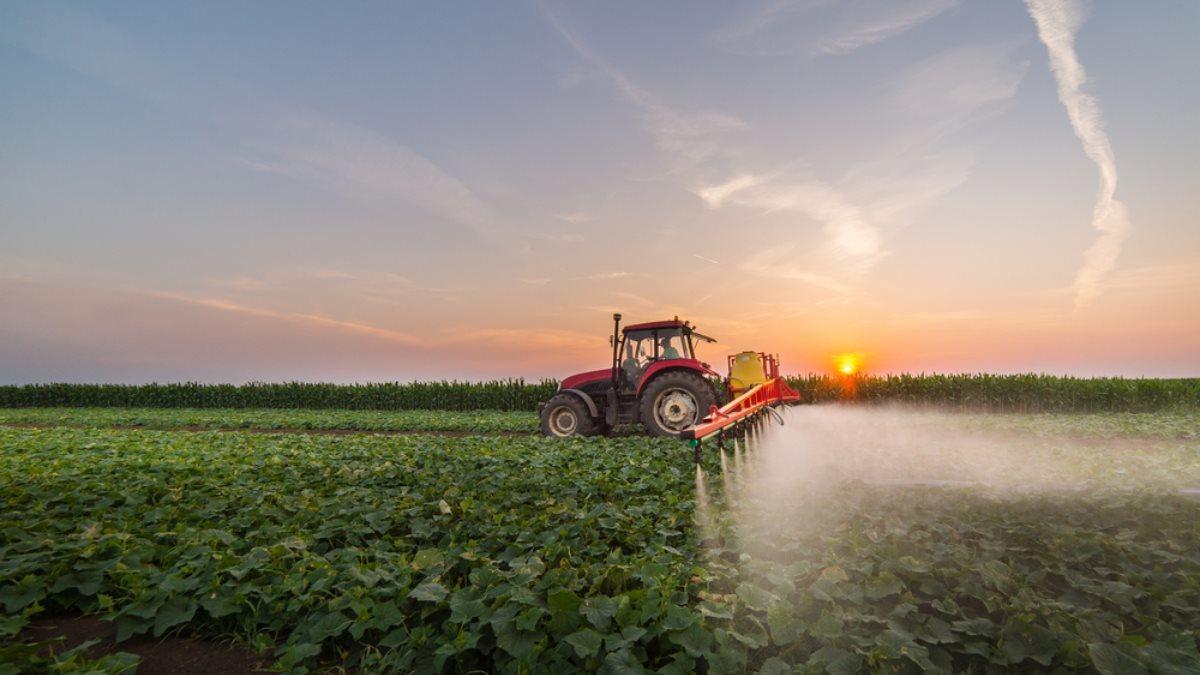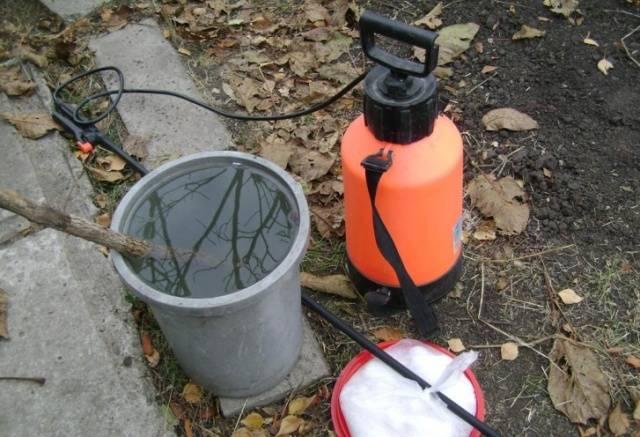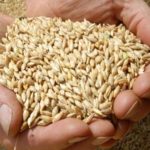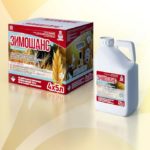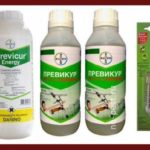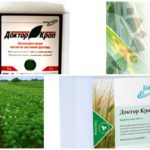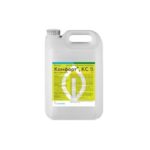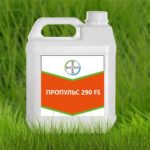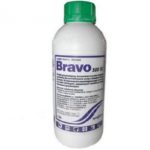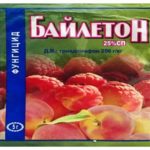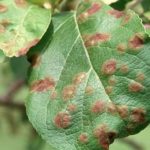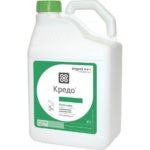There is a large selection of antifungal and bactericidal drugs that allow you to obtain a harvest with minimal losses. For grain crops, “Propisance” is produced - an effective universal fungicide. It is moderately toxic to humans, animals and bees. “Propisance” is recommended for use in private household plots. Positive feedback about the drug attracts attention to it.
Composition and release form of the protective fungicide "Propishans"
The active ingredient of the drug is propiconazole, 250 g/l. The emulsion concentrate is packaged in 5 liter canisters. The fungicide “Proscription CE” is produced by MTS Agro-Alliance.
Mechanism and spectrum of action of the drug
“Proscription” affects the production of intracellular membranes and enzymes in pathogenic fungi and bacteria. It also inhibits the reproduction function of microorganisms. Fungicide "Propisance" has a healing effect on cereal crops.
Its protective effect appears an hour after contact with the surface of a leaf or stem and lasts for a month. “Proscription” copes with many common diseases that cause enormous damage to the crop.
| Culture | Disease | Symptoms |
| Wheat, rye, barley | Powdery mildew | White coating on leaves and stems, sometimes on ears. Over time, the plaque turns brown. |
| Brown rust | Brown spots on the upper side of the leaf. Later they turn black, but do not merge. | |
| Winter rye, wheat, oats | Rust yellow | Yellow stripes in the leaf axils, along the leaves, on the ear shell. |
| Oats | Red-brown spot | Dull gray or brownish-red oblong spots limited by veins, leading to drying out of the entire leaf. The grain is incomplete. |
| Winter wheat, sometimes rye and barley | Pyrenophorosis | Many yellow or brown round or oval spots with a diameter of 2-5 mm appear on both sides of the leaf and its sheath. They grow along the leaf up to 12-20 mm in length. The spots are bordered by discolored areas. On spikelet scales, streaks up to 2x4 mm in size do not grow. |
| Barley
|
Net spot | Dark brown spots forming a reticular pattern, or non-merging individual oval or streak-like spots. After heading, the upper leaves dry out. The stems are turning brown.Dark gray spores may appear on the spots. |
| Striped spot | Pale yellow spots elongated along the leaf with a dark border with uneven edges. Then they darken. Leaves often tear in the middle or into 3 parts and fall off. The grain turns brown starting from the embryo area. | |
| Brown rust | Initial small, light brown, dusty, oval-shaped abscesses grow into solid black lines. | |
| Wheat, winter rye | Septoria | Large shapeless brown spots at the edge of the leaf or at its top. Over time, black dots appear on them. Then the spots turn black and dry out. The grains do not gain normal weight and turn black inside. |
| Rye, barley | Rhynchosporiasis | Oval grayish-white spots measuring 5-25x3-10 mm appear on both sides of the leaves and their sheaths at all levels. Barley has a red-brown border, but rye does not have a reddish-brown border. On the underside of the leaf, whitish or pinkish pads with spores are faintly visible. |
| Rye | Cercosporellosis | At the bottom of the stem there are spots that resemble eyes: the inside is golden in color, the rim is brown. Over time, black spores ripen on them. During grain ripening, the stems lie in different directions. There are pockets of white ears. |
Consumption rate
Fungicide "Propisance" is slightly soluble in water. This allows you to process fields in the intervals between short-term precipitation without loss of the drug and a decrease in its effectiveness.
Instructions for use of fungicide
“Prescription” is used at the first signs of a fungal disease.At air temperatures above +25 °C in combination with direct sunlight, burns form on plant surfaces as a result of spraying. The procedure must be carried out at any other time of the day.
The solution is prepared in several stages:
- Approximately 1/3 of the normal amount of water is poured into the sprayer tank.
- The hydraulic mixer turns on.
- The calculated amount of fungicide “Propisance” is poured in.
- The mixture is kneaded for 7-10 minutes.
- The remaining water is added.
- Stir for 5 minutes.
The mixing process continues until the end of spraying. The solution is not prepared in advance.
Precautions for use
It is preferable to spray the “Propisance” fungicide in calm weather. If the air currents move in one direction, it is also possible to spray the plant without losing product and without danger to health. You need to stand on the leeward side and direct the jet so that it is carried onto the object being processed. In any case, precautions will be required:
- wear closed clothes and shoes, a hat;
- measure the drug in a container specially designated for such purposes;
- work with rubber gloves;
- breathe through your nose;
- don't talk.
After the procedure is completed, clothing and gloves are not brought into the living area. The sprayer is washed well with water. Then use soda at the rate of 250-300 g per 100 liters of water. Treatment of plants with the Propisance fungicide should be stopped 30 days before harvest. Repeated spraying is required only in years of early onset fungal attacks. Field work can be carried out 3 days after applying the fungicide.
Compatibility with other tools
Chemicals should not be mixed unless absolutely necessary.However, the manufacturer stipulates the possible combination of the Propisance fungicide in one solution with most commercially available insecticides, herbicides, growth regulators and foliar fertilizers.
Storage rules
"Proscription" has a shelf life of 3 years. Store it in a specialized ventilated area, inaccessible to people and animals. Permissible temperature – from -10 °C to +30 °C.
Analogs
“Propisance” is not the only fungicide that saves grain crops from corrosive fungi. Drugs with similar therapeutic effects are listed in the table:
| Name of the product | Culture | Diseases |
| “Title Duo”, “Kolosal Pro”,
"Avaxx" |
Wheat | Powdery mildew, rust, septoria, pyrenophorosis. |
| Barley | Brown and net spots, rhynchosporiasis, septoria. | |
| "Title Duo", "Avaxx" | Winter rye | Rust, septoria, rhynchosporia, powdery mildew. |
| "Avaxx" | Oats | Red-brown spotting. |
Complete analogues of “Propisance” for the active substance from different manufacturers have different names: “Peon”, “Tilt”, “Prognoz”, “Profi”, “Profix” and others.

